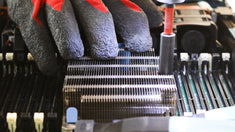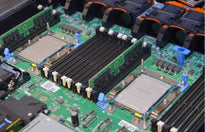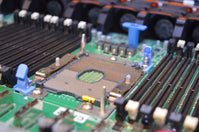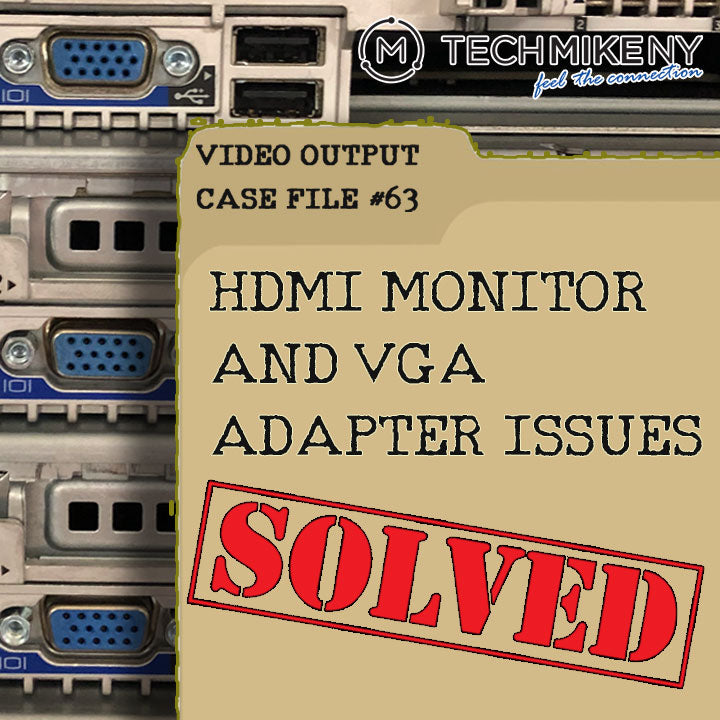At TechMikeNY, we love offering simple solutions to seemingly complicated problems. It’s easier for us, and certainly easier for our customers!
We’ve noticed more and more customers reporting an issue where everything seems to be running fine with the server when booting: fans spinning, lights blinking, etc. But alas, nothing is displaying on the monitor.
Before you remove your server’s access panel and start fiddling with cables, reseating processors and RAM, it’s essential to confirm that the issue is not caused by the monitor – or the video connection to the monitor – which may be incompatible with your Dell server.
The Background
Rack servers are optimized to work in a data center environment. As such, the video output on all Dell enterprise servers is ONLY VGA. With the advent of larger monitors and displays into the marketplace, which often have digital inputs such as HDMI and DisplayPort exclusively, finding compatibility between the rack server and monitor can create challenges. Furthermore, as many of our customers have experienced, a VGA-to-HDMI cable or adapter is not a reliable solution. This incompatibility is due to the difference between VGA’s analog signal and HDMI’s digital (DisplayPort and DVI – an older interface – are also digital signals. As such, VGA-to-DisplayPort and VGA-to-DVI may also cause the same issues).

TechMike’s Simple Solution
If this scenario sounds familiar, here are two troubleshooting steps you can take:
- Connect the server to a VGA native LCD monitor that is less than 24inches. Fortunately, many of these smaller VGA monitors are inexpensive on the secondary market. As many of our customers have already discovered, the display shows the system booting and everything is functioning. Problem solved!
- If you don’t have a native VGA monitor readily available, you can connect to the server remotely and utilize iDRAC to configure the server. Note that only the iDRAC Enterprise license has the Java/HTML5 KVM interface. If you intend to configure it remotely due to a lack of a VGA monitor, you may want to ensure your server has Enterprise iDRAC. At a minimum, this can help confirm that the server is functioning correctly and the video connection is the culprit. However, note: it is still possible that you may need to have the VGA monitor to properly configure the iDRAC settings if the default settings are not compatible with your network!
| A NOTE ON HP SERVERS: HP’s 10th Gen servers have introduced a DisplayPort output. The 8th and 9th Gen models only have a VGA output. While we haven’t experienced as many HP VGA output problems due to the smaller volume of HP servers we sell, the issue could be replicated, and the same troubleshooting steps for Dell servers could be applied. |
Have you experienced a similar issue? Let us know at info@techmikeny.com. We love hearing from you and like to collect these case studies to better support our customers!













6 comments
I found the issue to be with my VGA/HDMI adapter.
Turns out, these adapters arent always (if ever) bidirectional.
I had bought an adapter that was HDMI to VGA, which doesn’t work when connecting to a VGA output port.
Be sure you’re buying an adapter that has the right flow of data.